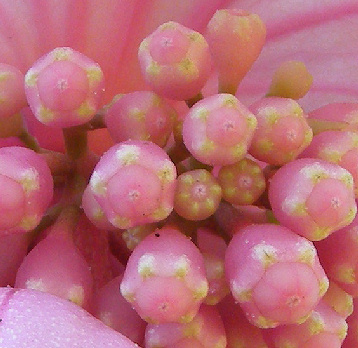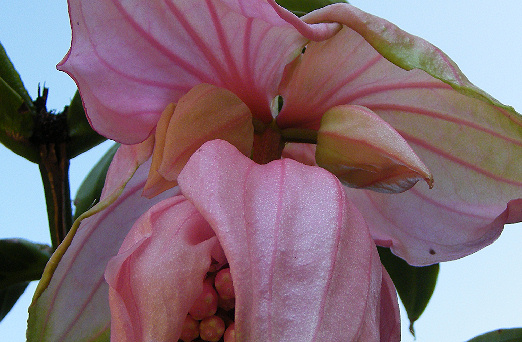|  | |
Now and then you see it at the garden centers, the medinilla. Desire to own this imposing plant with its huge flower clusters burn within us. It is not called magnificent for nothing! It is unfortunately rather difficult to grow and is best suited to a orangeries or greenhouse. The medinilla, which is easily recognized by the two large pink bracts that surrounds the flower cluster, belongs to the species Medinilla that contains about 150 species. The blooms are born in tiered clusters, hence the English name chandlier tree. The majority of these comes from Madagascar, while the one most often found in commercial production, M. magnifica, is indigenous to the Philippines. A truly tropical plant with its needs for high humidity and a warm climate. If your covertness (like mine) could not be contained and you still purchased this irresistible plant, here are a few tips to grow your medinilla indoors. There are no guarantees, but by following these rules I managed to keep mine alive and set bud! | ||
Care of Medinilla
 |
Temperature Room temperature or warmer during the growing season, somewhat cooler under the rest period. This plant is extremely frost intolerant and should not be kept at temperatures below 50F (+10C). Watering Water generously and remove excess water after about half an hour alternatively sink the whole pot into a bucked, with about 2 inches of water, for about 30 minutes. Water daily during the growth cycle, less often when the plant rests. The medinilla should never be allowed to dry out. |
|
Humidity |  |
SVENSK TEXT * * * * * HOME